What are the Largest Bear Species?
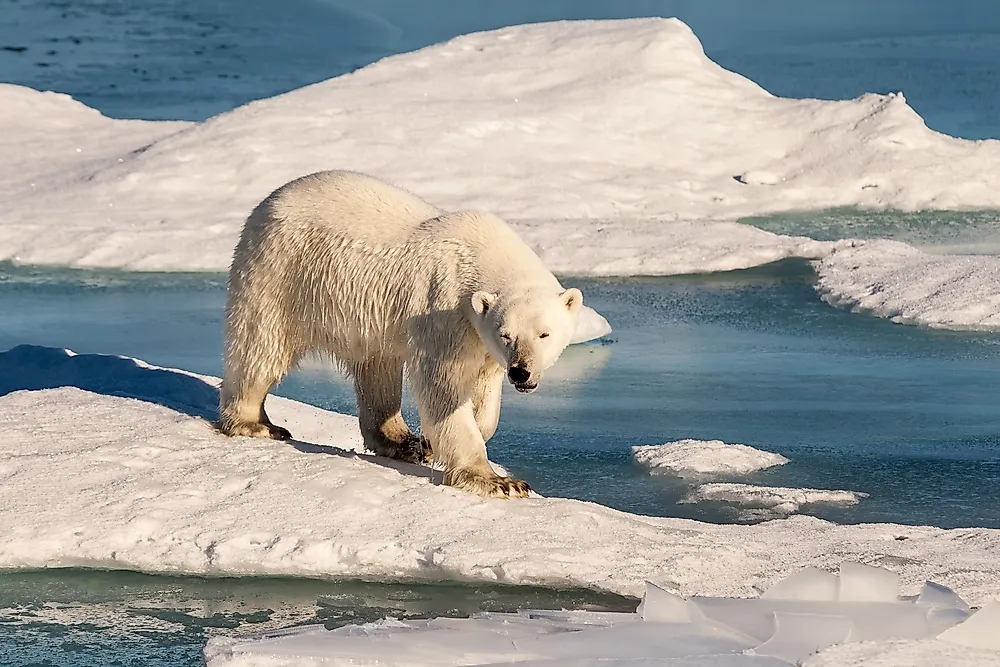
A bear is a fur-covered mammal which is generally monogamous, territorial, and lives in solitary. Most are omnivores except the polar bear which feeds on seals. The largest bear species in the world include polar bears, brown bears, and spectacled bears.
Like many other species, bears are an endangered species. Various international organizations like the International Union for Conservation of Nature (IUCN) and the World Wildlife Fund (WWF) have put measures to conserve the ecosystem and advise concerned nations to put legislative measures to protect the bears.
7. Malayan Sun Bear - 176 lb
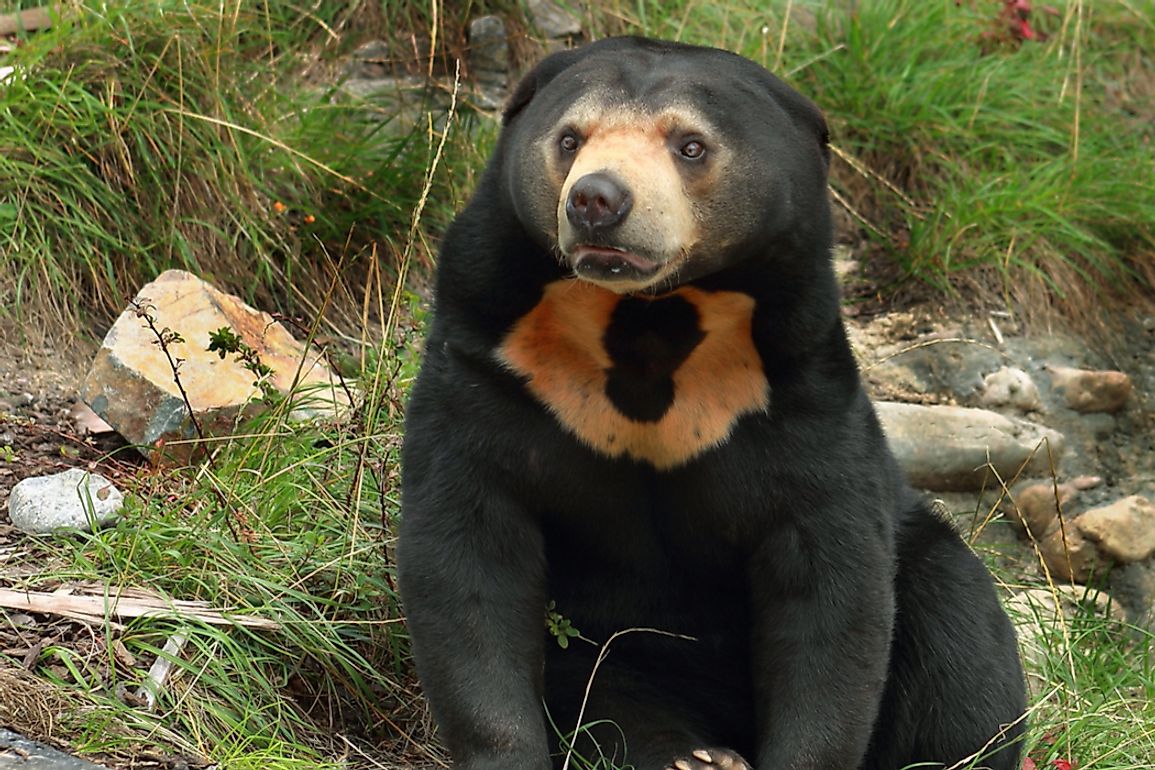
Deriving its name from a white mark on their chest that resembles the rays of the sun, the Malayan sun bears are locally known as the Honey bear. They are the smallest in the bear species weighing between 27-80 kilograms (176 pounds) and growing to a length not exceeding 60 inches. The body is covered with black, smooth, and sleek fur with a round pattern running from the shoulders towards the rest of the body. It has an elongated tongue, small ears, and inward turning paws. The bear is common in the thick forests south of China and east of India. Nocturnal by nature, they have robust jaws, ken sense of smell, and long tongue that enables them to eat a variety of forest products such as honey, plant, and small animals. Young ones reach sexual maturity at 3-4 years old. Known to be monogamous, a sow gives birth to one or two blind cubs which suckle for about 18 months.
6. Giant Panda - 220 lb
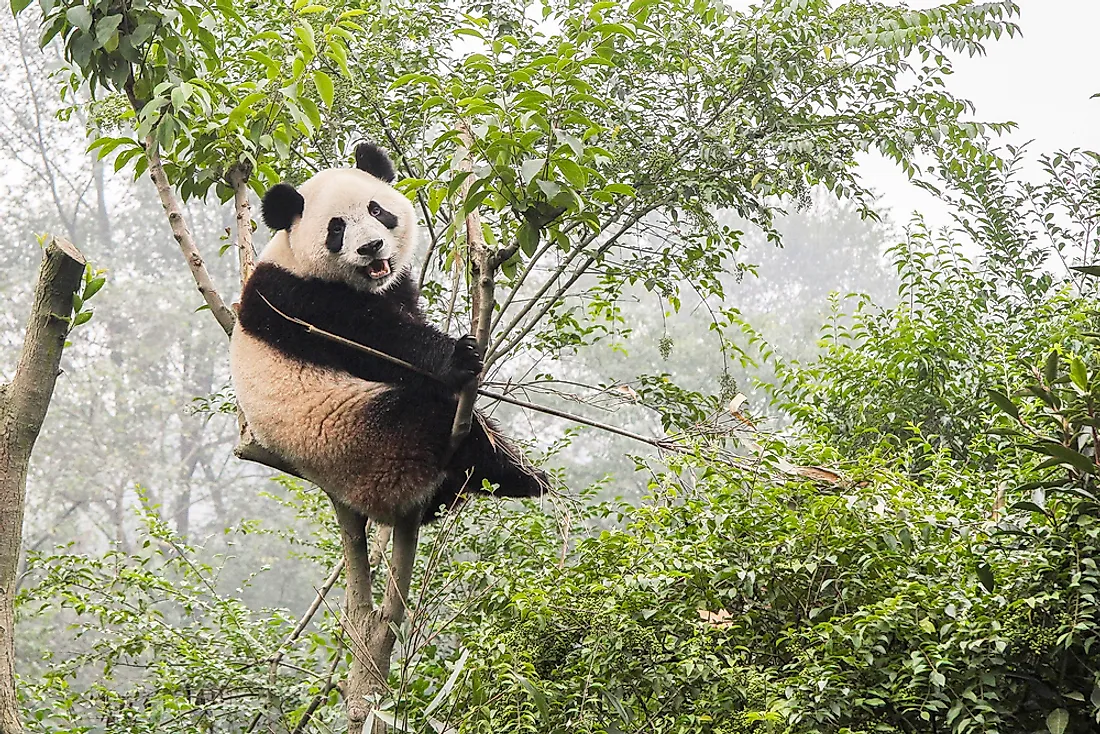
Distinct for their use as the logo for WWF since 1961, the panda is a treasure in China and is easily recognized for its black and white fur. An adult panda weighs 70-125 kilograms (150-220 pounds) and is 2 meters (6 feet) long. The body is covered with thick layer of fur due to its cold habitat. They roam in solitary and are territorial, though they do not establish permanent nests. Commonly found in bamboo vegetation, they forage for food at dawn and at dusk. Though it has a digestive system of a carnivore, it feeds mostly on plants. With a lower metabolic rate, they have to eat at least 26 pounds of bamboo daily to supplement energy. The pandas reach sexual maturity at four years and have gestation period of 95 to 160 days. They give birth to one or two cubs weighing 90 to 130 grams (3-5 ounces). Artificial insemination efforts have been successful.
5. Asiatic Black Bear - 298 lb
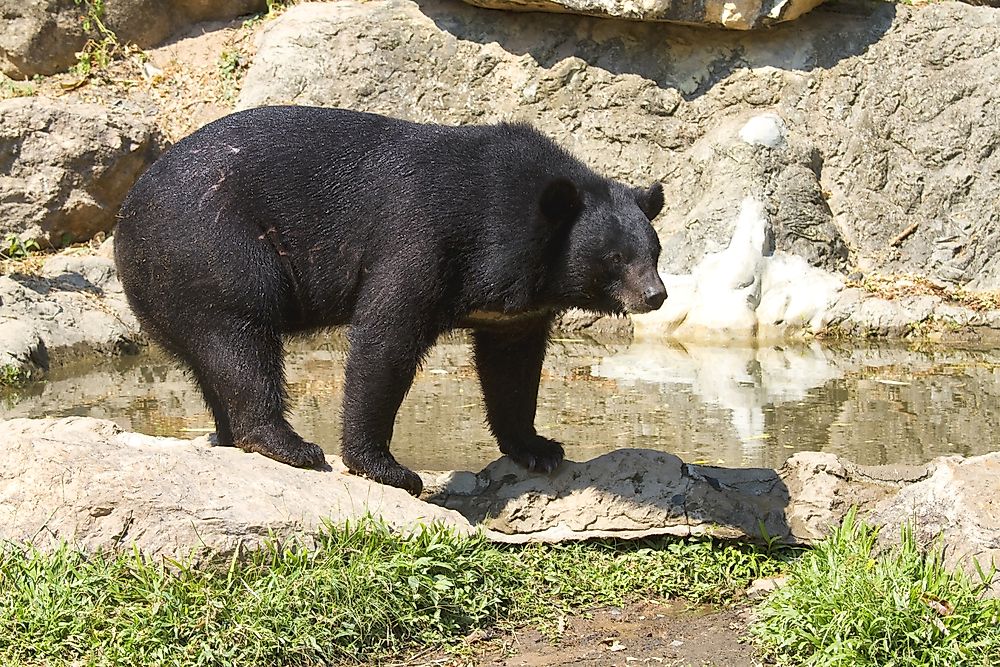
Commonly found in Asia, the Asiatic black bear is also referred to as moon bear or white-chested bear. An adult female weighs up to 125 kilograms (276 pounds), while a male might be heavier at 200 kilograms (440 pounds). An adult is about 72 inches (180 centimeters) excluding the tail. The body is covered with black fur with a V-shaped white area on the chest. Another white spot is found in throat and chin. The ears are huge and legs are robust with broad paws. Because of their nocturnal nature, they feed on insects, rodents, and plant matter, mainly termites, bees, birds, mushrooms, and grains. The gestation period is 7 to 8 months, giving rise to 1-4 cubs which begin to walk at four days of age. Sows give birth in caves.
4. Sloth Bear - 310 lb
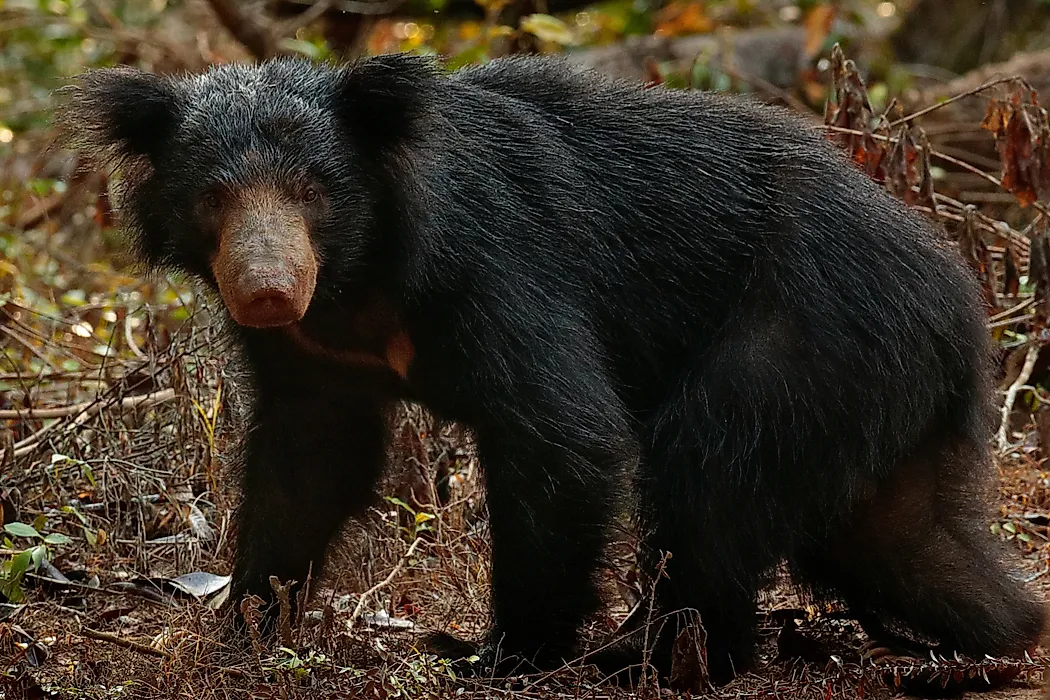
The Sloth bear is known as the insectivorous bear. It is dominantly found in India and Sri Lanka. The sloth bear has long, loosely hanging, shaggy black fur on its body and has a mane surrounding the face. The legs are strong with c-shaped claws. The mouth is long, with long lower lips and weak teeth. It produces grunting sounds. An adult weighs almost 130 kilograms (310 pounds) and has a height of 2 meters (6 feet). Their staple food is insects, mainly the termites and ants which they locate using their excellent sense of smell and access by digging using their sickle-shaped claws then sucks them through a gap between their teeth. They occasionally feed on plants. A sloth bear becomes sexually active when it is 3 years old. The female normally gives birth after 210 days in an underground nest. A unique feature is that the young one is carried by the mother on its back.
3. Spectacled Bear - 340 lb
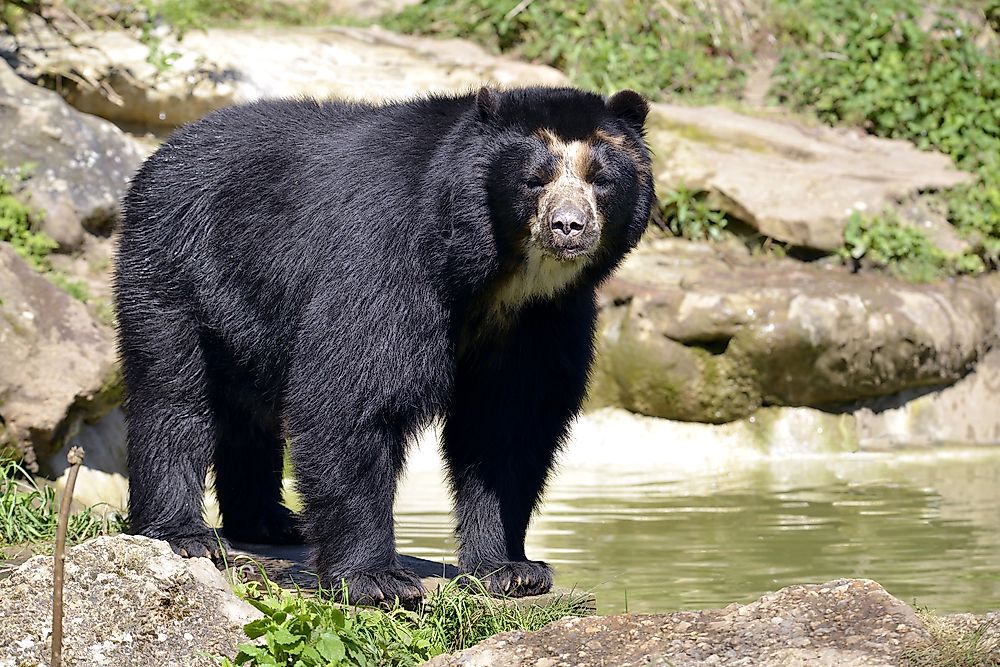
The Spectacled bear is only found in South America’s forests. They are called so because they look like a man with spectacles or glasses on. They have a short face with white rings on the eyes against a predominantly black-furred body. The male is twice as big as the females, meaning that when an adult male is 200 kilograms (440 pounds) the female is 100 kilograms (185 pounds). Their length is 47-80 inches (120-200 cm). Their short but strong legs make them climb trees very fast where they build nests and sleep. This bear can be active both at night and during the day. It is an omnivore, feeding on a wide range such as rodents, fruits, berries, and leaves. Sexual maturity occurs between 4-7 years. Active mating is witnessed between April and June with the gestation period ranging from five and a half months to nine months. A cub weighs about 330 grams (12 oz.) with 2-3 cubs per litter.
2. Brown Bear -1300 lb
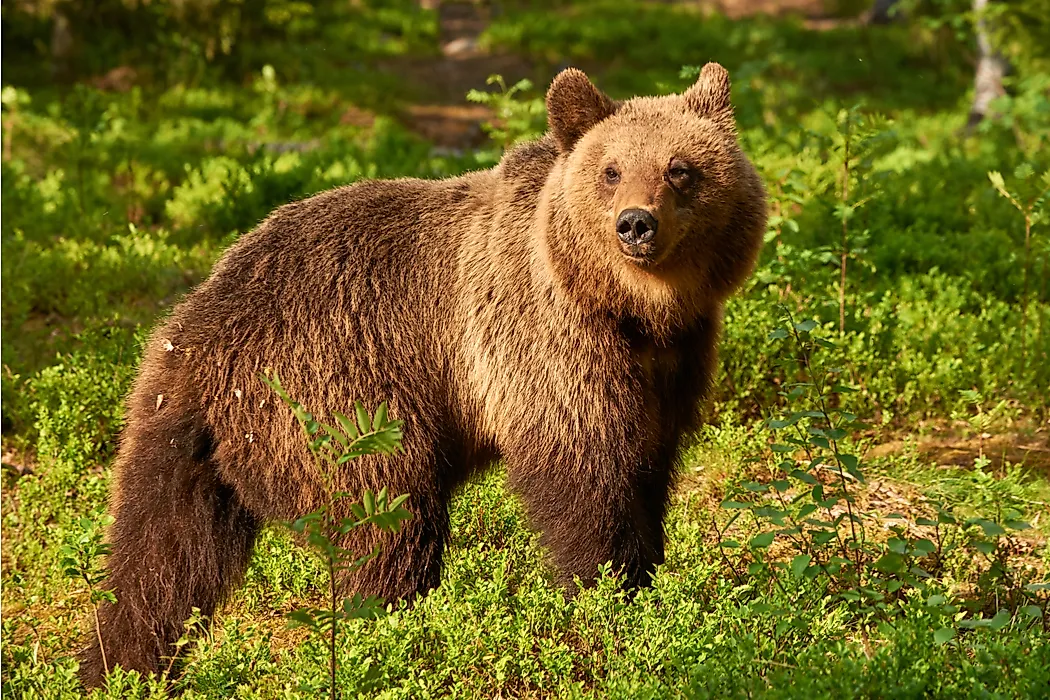
The Brown bear species can swim and run. The bear was once trained to dance to certain rhythms in Europe. They are widely found across the globe. An adult weighs approximately 1300 pounds and can grow to 210 centimeters (83 inches). The bear is covered by brown fur which becomes thicker in winter. It has stout legs, sharp claws, and wide paws that enable them to either swim or run very fast. Omnivores by nature, they feed on plant matters and small animals, insects, and even fish. Their body is able to store fats which assist them to survive in winter. The female carries the pregnancy for six to eight months. A litter, mostly twins, weighs about 800 grams at birth.
1. Polar Bear - 1600 lb
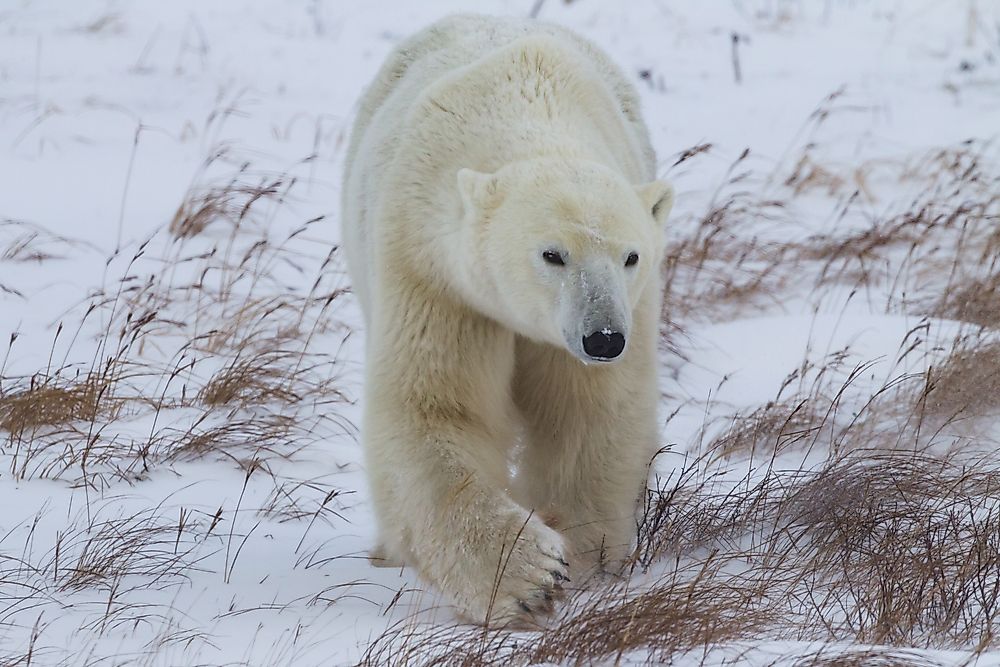
The polar bear is a carnivorous bear living in the Arctic Ocean. The global warming is posing a great threat to their survival. Polar bears are grouped as sea animals due to the fact that they spend most of their time in the water. Their body is covered by fat that makes it adapt to the cold condition by insulating the body. Their strong paws enable them to hunt as well as swim. They hunt for animals, mainly seals, using their sharp teeth. Their skin is able to store fats over a long duration hence retain heat. They give birth to one or two cubs which are born with fur due to the cold climate.











